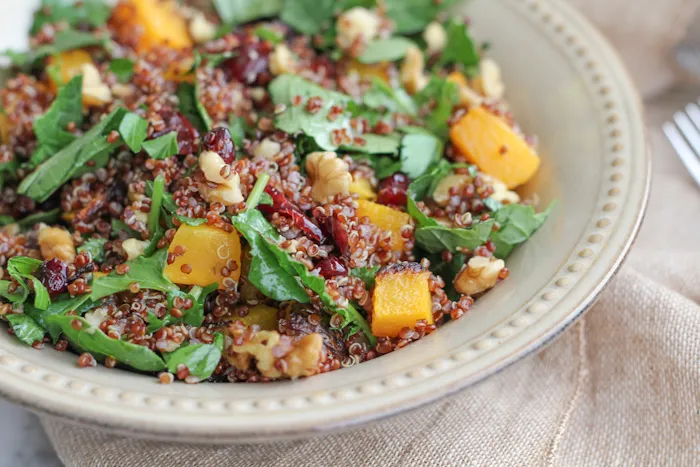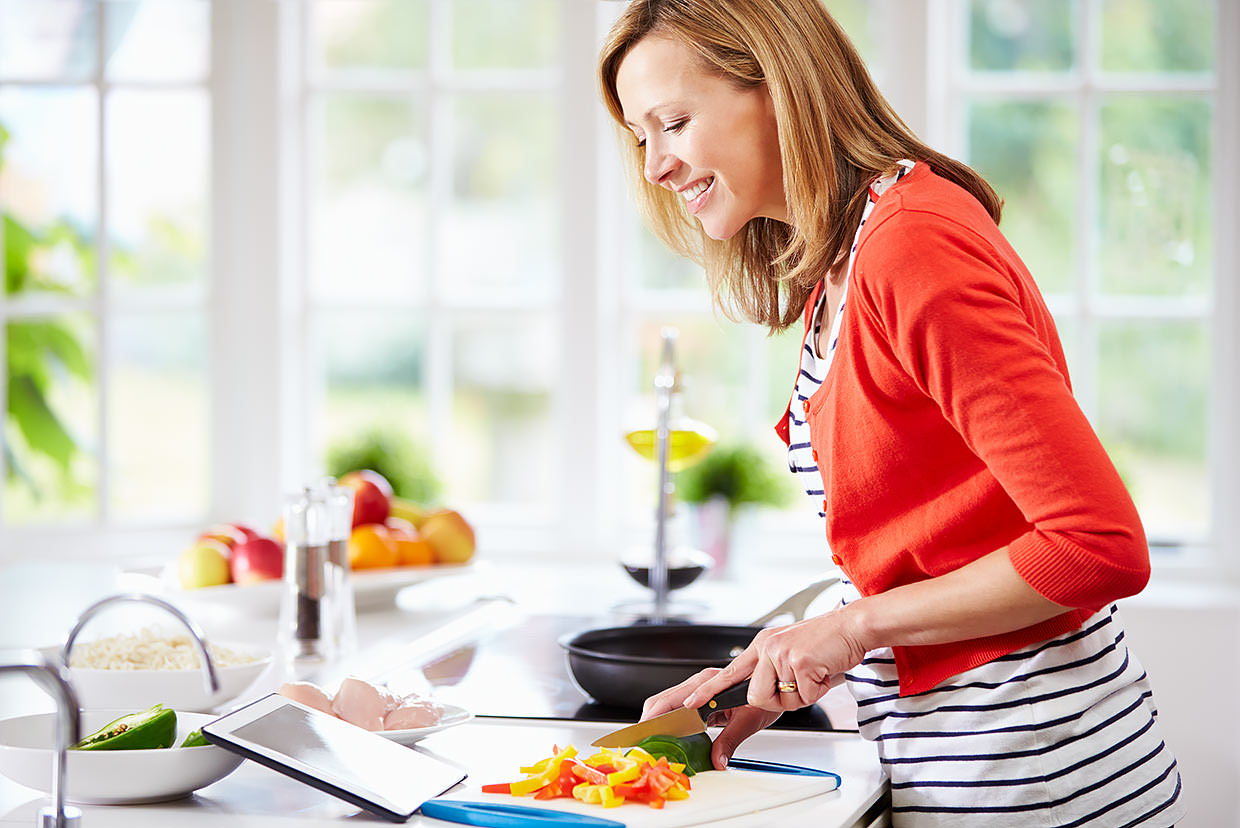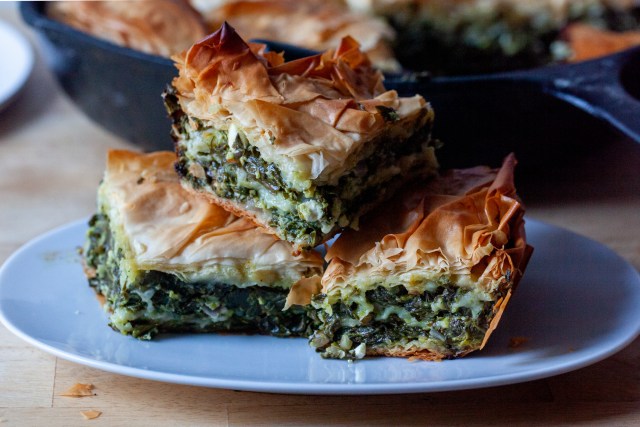Superfoods that are popular are often high in carbs, even if they are healthy and…
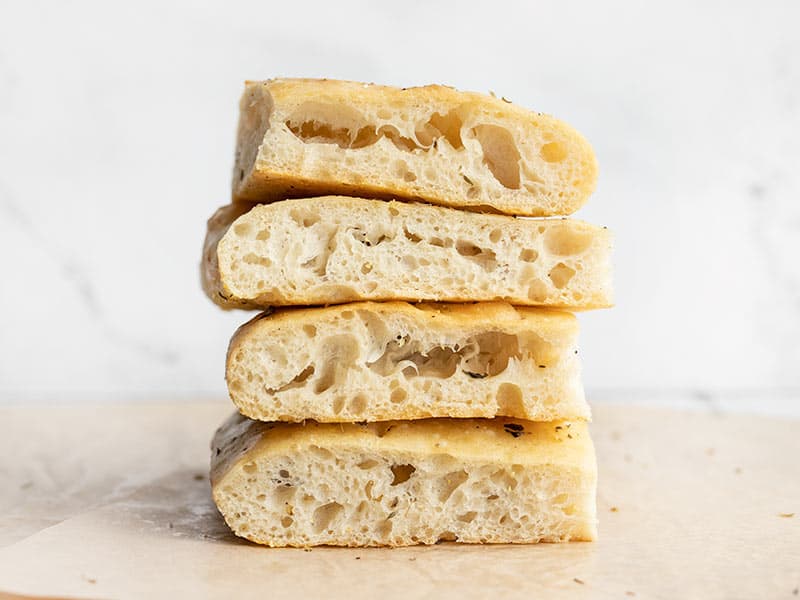
No-Knead Focaccia
$1.31 recipe / $0.11 serving
Once you try focaccia, you’ll never go back to plain bread! This hearty No-Knead Focaccia is coated in olive oil and herbs, making every bite full of delicious flavor. And the best part? It only takes about 5 minutes of hands-on work to make an amazing loaf. This delicious bread pretty much makes itself!
Originally published 4-30-2011, updated 5-28-2020.
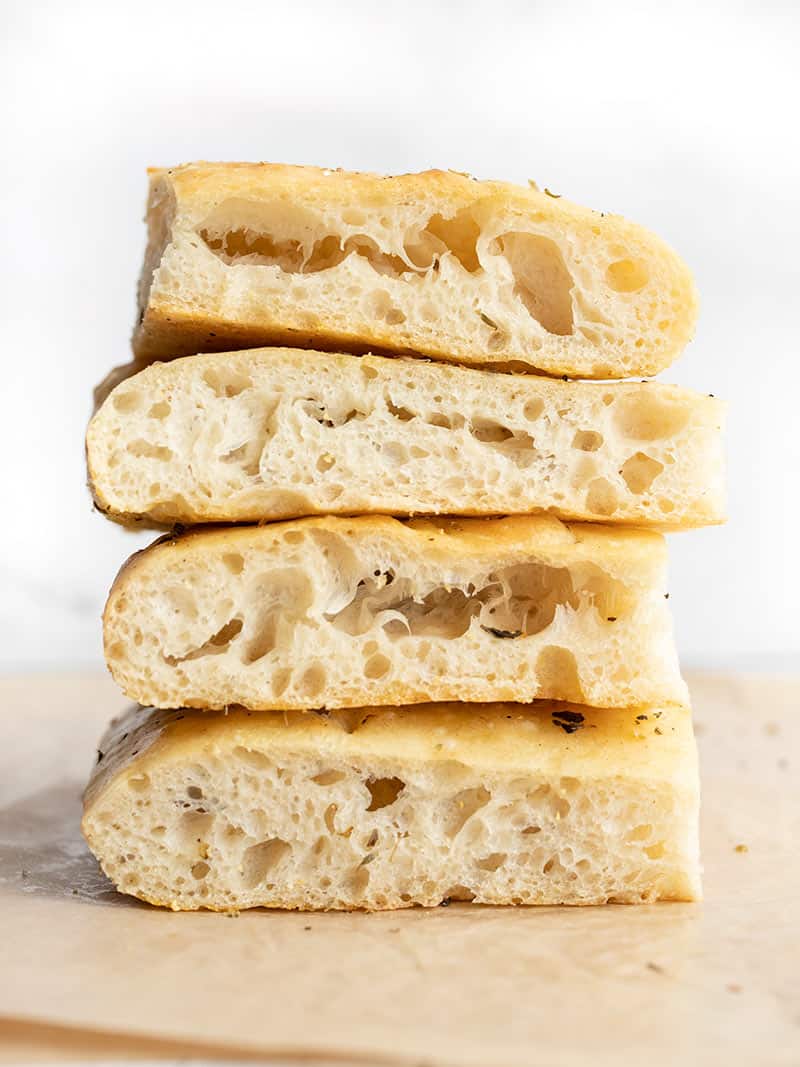
How Does No-Knead Bread Work?
When making regular bread, you have to use a lot of elbow grease kneading the dough to make the gluten strands line up and form a sort of matrix that gives the dough strength and texture. With no-knead bread, the dough is allowed to ferment overnight. During fermentation enzymes break down the gluten in a process called autolysis, which makes it easier for them to untangle, line up, and form the matrix that usually takes a lot of kneading to form.
An added bonus is that overnight fermentation adds a lot of flavor to the bread. AND, since the yeast has so much time to grow and multiply, you only need to use ¼ tsp yeast, compared to about 2 tsp for a normal loaf of bread! Win-win!
What Kind of Yeast Can I Use?
This no-knead style bread is a little unique because the yeast is combined with dry flour, instead of being mixed with water and allowed to “proof” first. Because it’s not proofed first, you’ll need a specific kind of yeast—instant yeast or bread machine yeast. These types of yeast do not need to be “woken up” in warm water before being added to bread dough.
What Do You Serve With Focaccia?
Focaccia is such a versatile bread! It makes a great side dish with just about any meal, but I think it’s particularly nice with soups and stews. It’s hearty texture makes it great for dipping, dunking, and sopping up sauces, stews, and soups. It’s also fantastic for sandwiches, especially pressed sandwiches like paninis. You can also use this bread to make pizzas or flatbreads. Simply top it with your favorite cheese, meat, or vegetables and bake again until the cheese is melted and bubbly.
Freeze the Extras!
This makes a BIG batch of focaccia bread, so I highly suggest freezing the leftovers. Most bread, including focaccia, freeze beautifully, so you can have homemade bread with any meal without a lot of work. To freeze the focaccia, simply let it cool completely until it is room temperature, cut it into slices (whichever size or shape you prefer), then place it in a gallon-sized freezer bag. The frozen no-knead focaccia thaws quickly at room temperature.
Can I Use Whole Wheat Flour?
Yes, you can substitute some of the all-purpose flour for whole wheat. Using all whole-wheat flour generally creates a very heavy and dense bread, so I highly suggest using only some, up to 50%, whole wheat flour. You may need to use slightly more water, as whole wheat flour absorbs more moisture than all-purpose flour.
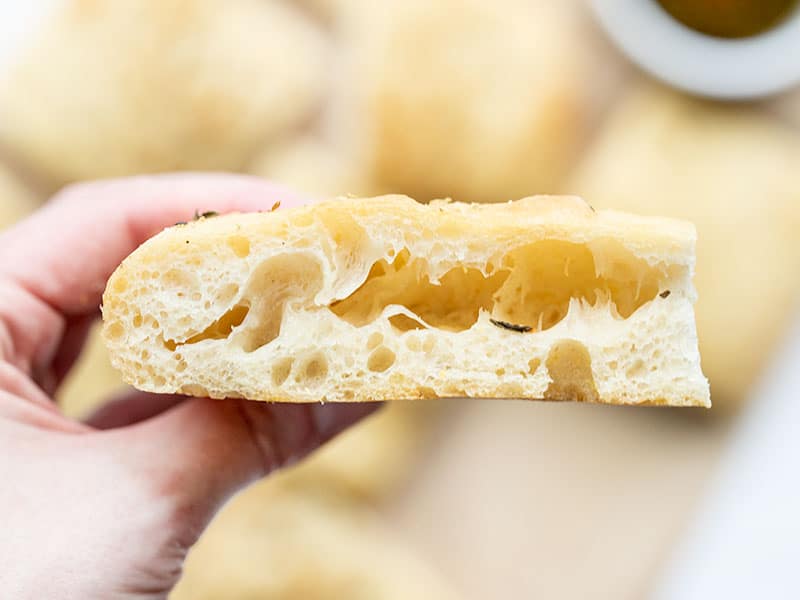

No-knead Focaccia Bread
Fresh, hearty focaccia bread is incredibly simple to make with this no-knead method. It’s perfect for sandwiches or dunking into soups and stews.
Servings: 12 squares
- 4 cups all-purpose flour ($0.61)
- 1/4 tsp instant yeast ($0.02)
- 1 1/2 tsp salt ($0.03)
- 2 cups water ($0.00)
- 2 Tbsp olive oil, divided ($0.32)
- 2 Tbsp cornmeal ($0.03)
- 1 Tbsp Italian seasoning ($0.30)
-
The night before, combine the flour, salt and yeast in a bowl. Stir until everything is evenly combined. Add the water and stir until it forms one cohesive, sticky, shaggy ball of dough with no dry flour left on the bottom of the bowl. If there is still dry flour in bowl, add a little water (1-2 Tbsp) until the dough comes together (scroll down to the step by step photos for examples). Loosely cover the bowl and let sit at room temperature for 12-18 hours.
-
The next day the dough will be wet, bubbly, and very fluffy. Dust the top of the dough with some flour, then scrape the dough from the sides of the bowl. Turn the dough over on itself a few times until it forms a ball in the center of the bowl.
-
Line a baking sheet with foil then drizzle with 1 Tbsp olive oil. Spread the oil to coat the surface of the foil, then sprinkle cornmeal on top of the oil.
-
Transfer the dough to the baking sheet. Stretch and pat the dough out into a large rectangle. You may need to dust your hands with flour throughout this process to keep the dough from sticking.
-
Drizzle olive oil over the surface of the dough and use a soft brush to spread it evenly over the surface. Sprinkle the Italian seasoning (or any type of herbs) over top. Let the dough rise for another hour.
-
Preheat the oven to 425ºF. Using your fingers, press dimples into the risen dough. Bake the focaccia for 20-25 minutes in the preheated oven or until the surface is golden brown. After removing from the oven, allow the focaccia to cool before slicing and serving.
See how we calculate recipe costs here.
Serving: 1sqaure ・ Calories: 177.83kcal ・ Carbohydrates: 33.13g ・ Protein: 4.45g ・ Fat: 2.69g ・ Sodium: 356.03mg ・ Fiber: 1.22g
Nutritional values are estimates only. See our full nutrition disclosure here.
The equipment section above contains affiliate links to products we use and love. As an Amazon Associate I earn from qualifying purchases.
Try More No-Knead Bread Recipes:
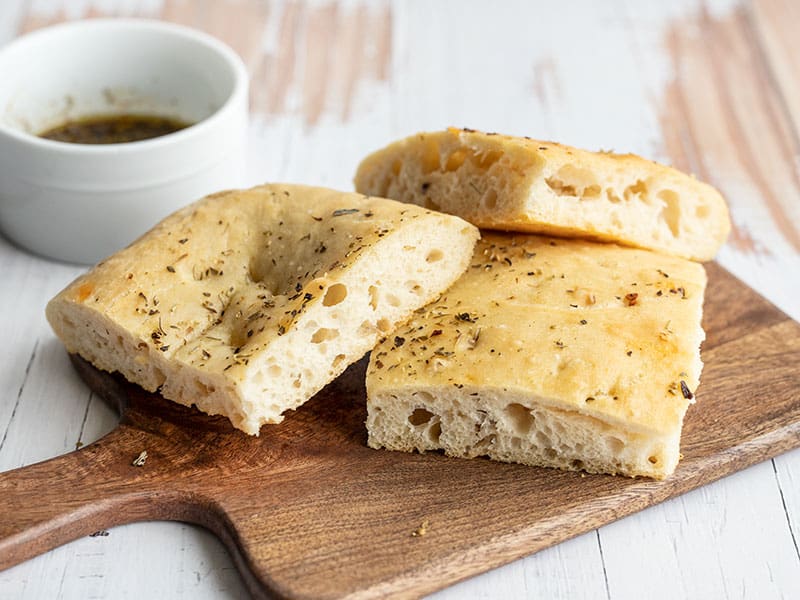

How to Make No-Knead Focaccia – Step By Step Photos
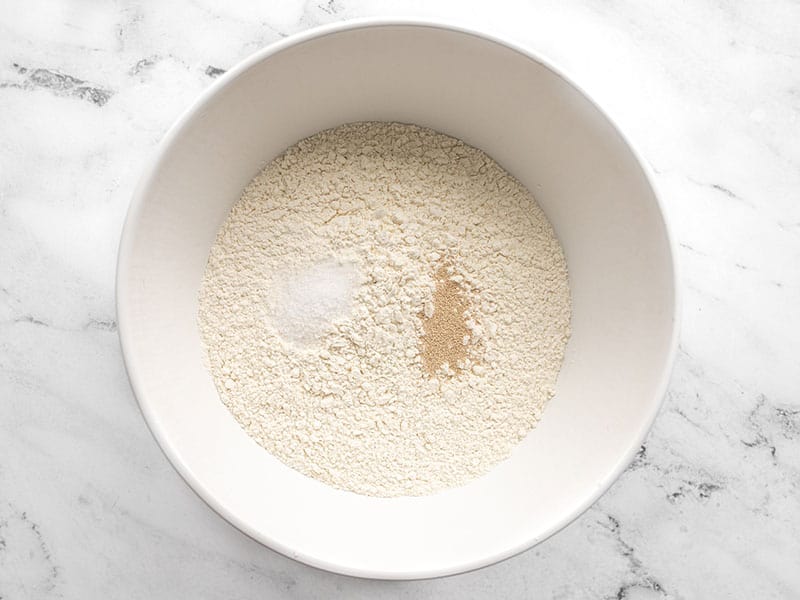

Start with 4 cups all-purpose flour, ¼ tsp instant yeast, and 1.5 tsp salt. Stir them together until everything is well combined.
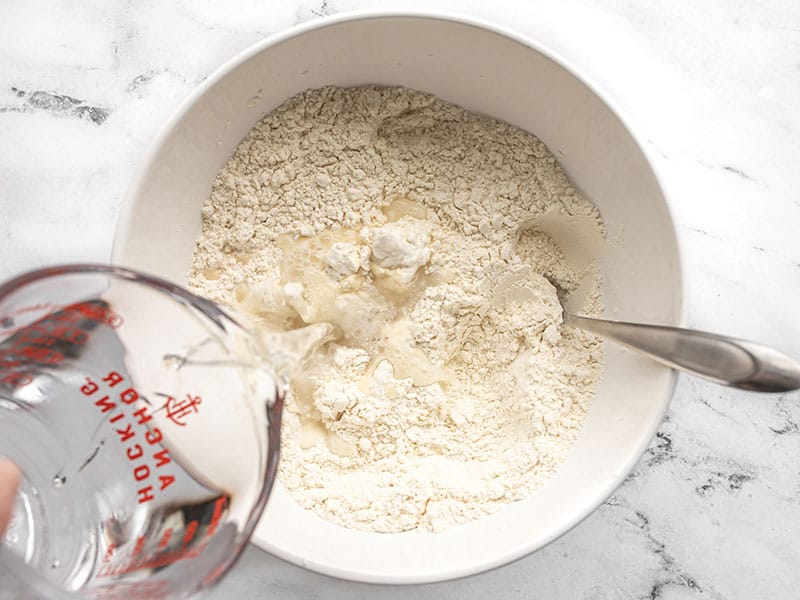

Add 2 cups water to the flour mixture. This part will require a little flexibility on your part. You may need to add slightly less or slightly more water depending on the ambient humidity in your home and fluctuations with measuring the flour. I’ll show you what to look for in the next photos.
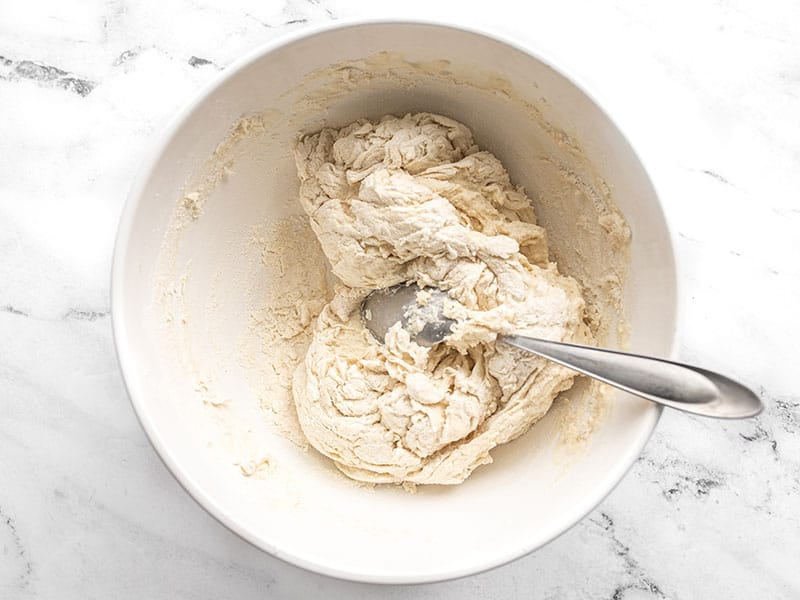

Stir the water into the flour until it forms a ball of sticky dough and there is no more dry flour left on the bottom of the bowl. In the photo above, the dough is too dry. You can see dry flour on the bottom of the bowl and the dough ball is not cohesive. If this is your dough, add a tablespoon or two more water.
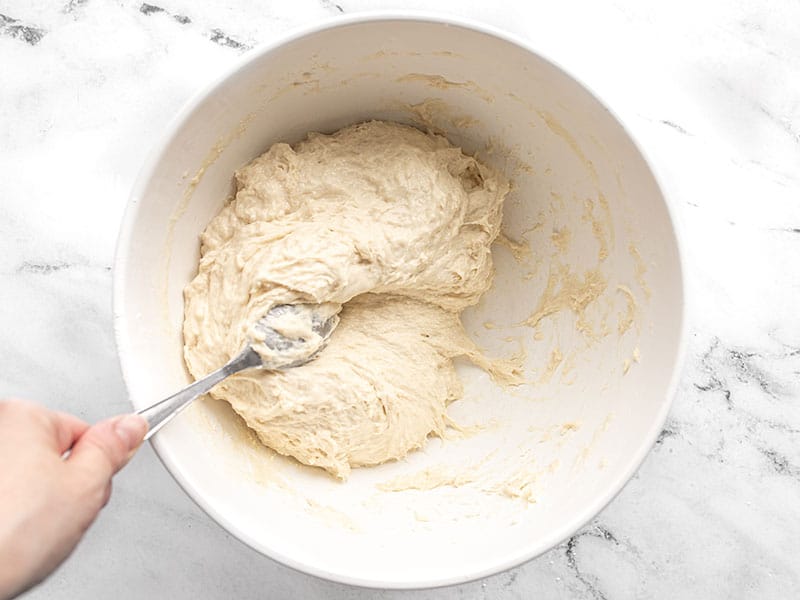

Your dough should look like this. Sticky, but not slimy or shiny, and no dry flour on the bottom of the bowl. This style of dough is much more wet than traditional bread dough. Cover the bowl loosely and allow it to sit at room temperature for 12-18 hours.
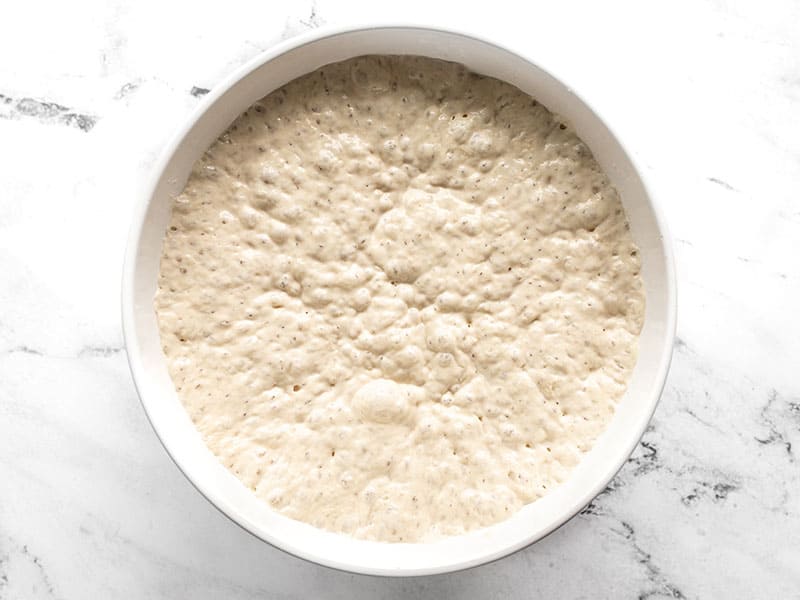

After 12-18 hours the dough will look very bubbly and large, like this. Am I weird for thinking that’s gorgeous??
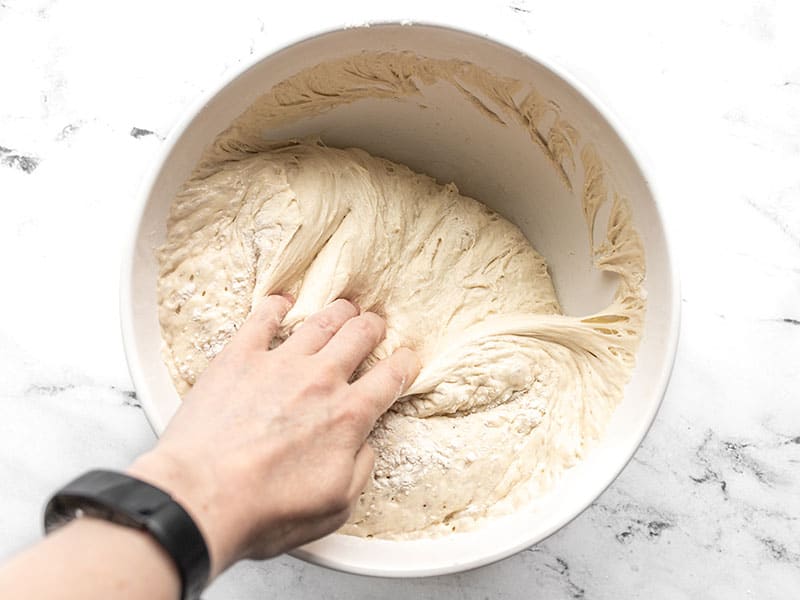

Sprinkle a little flour over the dough to keep your hands from sticking and pull the dough from the sides of the bowl. Turn the dough over onto itself a few times until it forms a sort of ball. Keep your hands well floured as you do this.
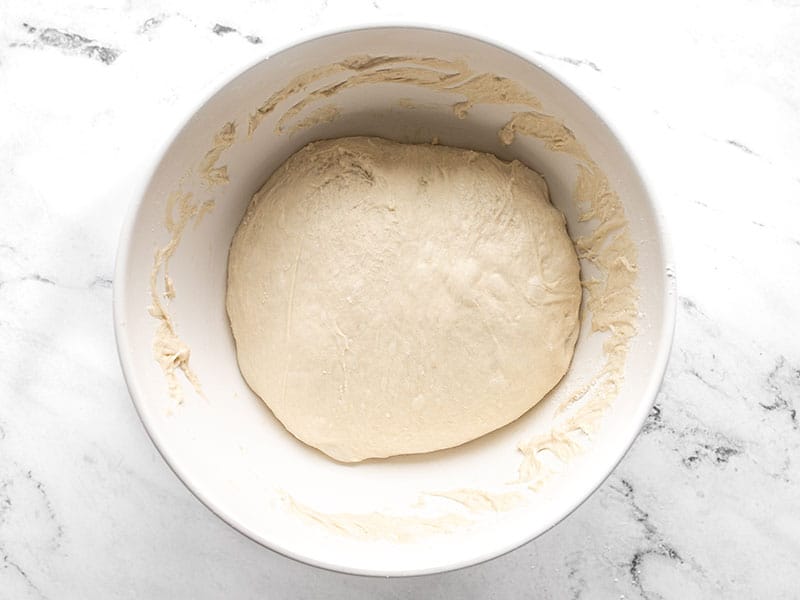

This is what the dough looks like after I folded it onto itself a few times. The gluten matrix is well developed. You can tell by how smooth it is and the air bubbles trapped right under the surface.
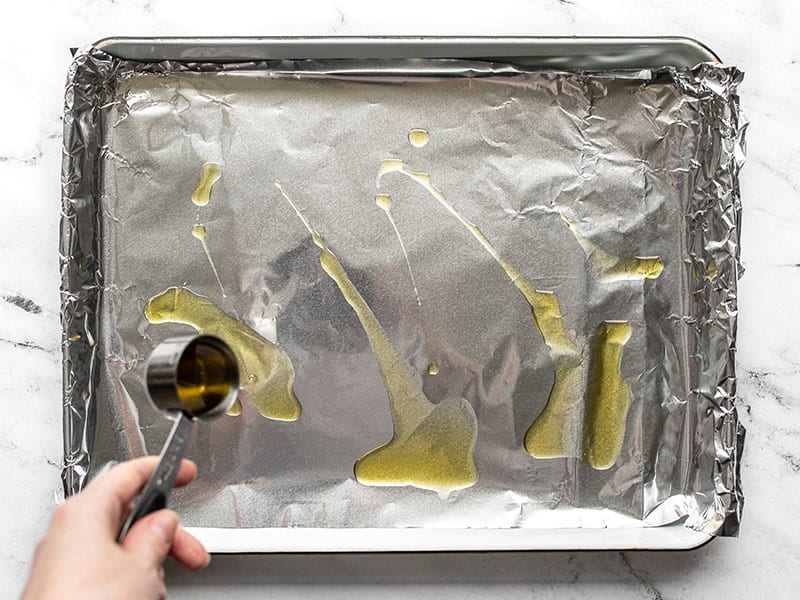

Line a baking sheet with foil, then drizzle 1 Tbsp olive oil over the surface. Use your hands to spread the oil to evenly coat the surface of the foil, then sprinkle about 2 Tbsp cornmeal over the oil.
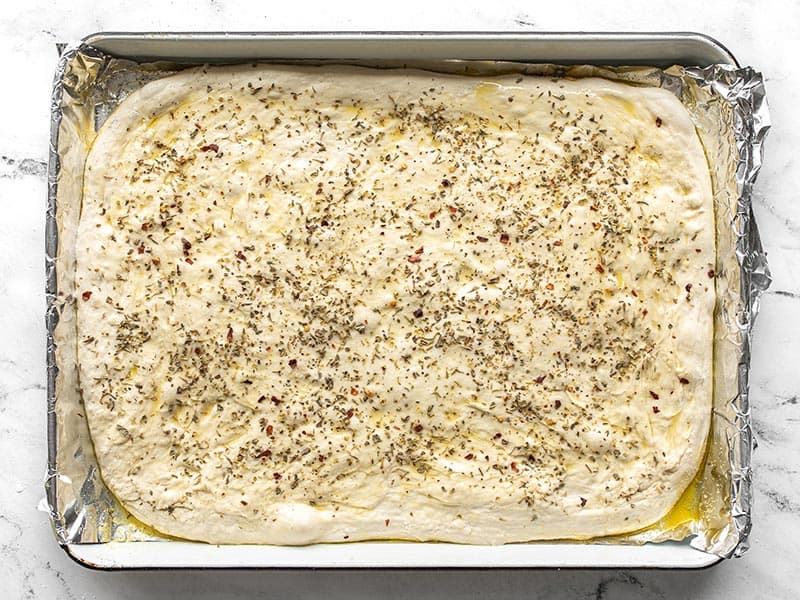

Transfer the ball of dough to the prepared baking sheet and press and stretch it out until it fills the entire baking sheet. Drizzle one more tablespoon of olive oil over the surface of the dough, then sprinkle 1 Tbsp Italian seasoning over the surface (you can use a mix of basil, oregano, and red pepper if you don’t have Italian seasoning).
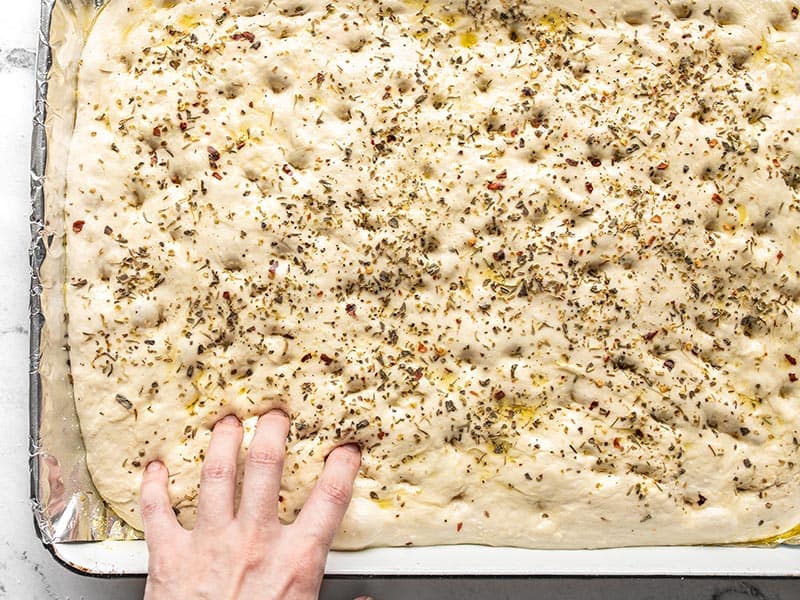

Let the dough rise for one hour (or a little more if your ambient room temperature is on the cool side). When you get close to the end of the rise time, begin preheating your oven to 425ºF. Use your fingers to make dimples all over the dough.
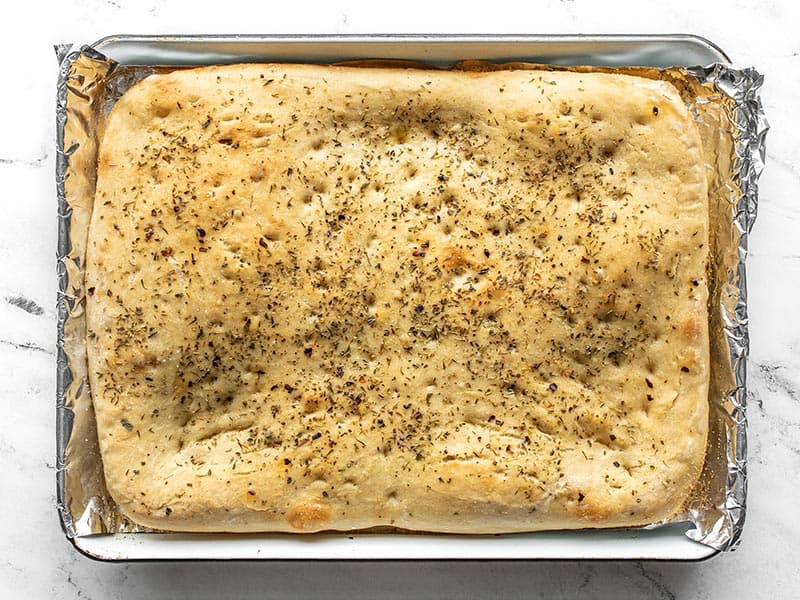

Once the focaccia has risen and the oven is fully preheated, transfer the baking sheet to the oven and bake the focaccia for 20-25 minutes, or until it is nicely golden brown on top.
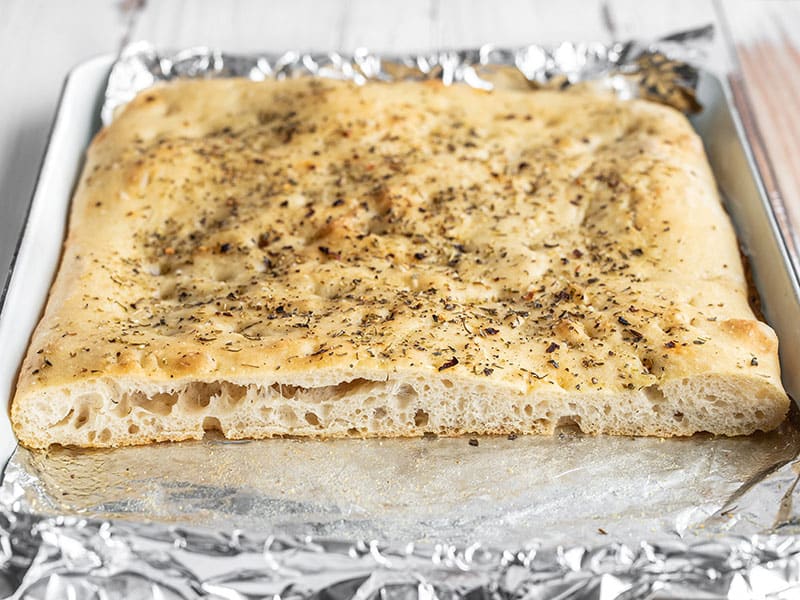

Look at those gorgeous bubbles!
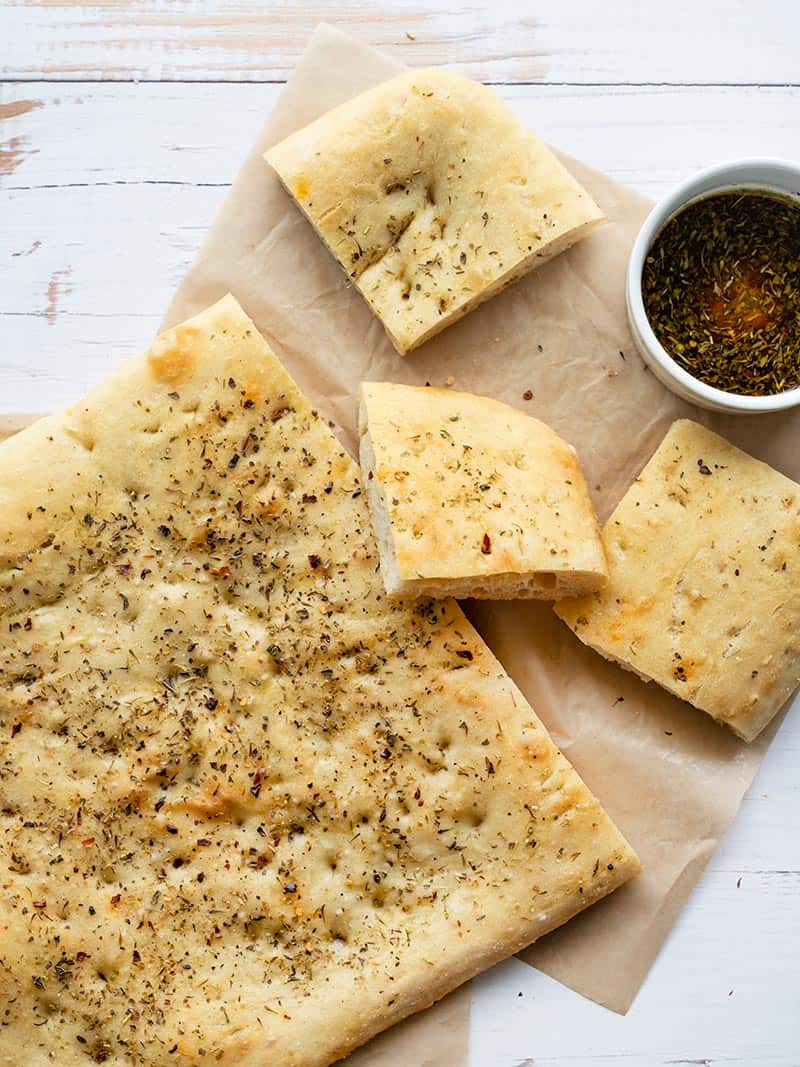

Let the bread cool before slicing. You can slice it into 12 squares, or into strips, which are nice for dipping and dunking into soups and stews.
Related Posts

